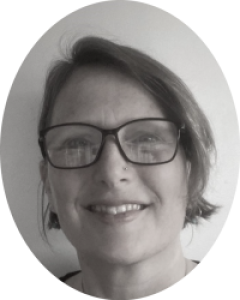I’ve been in school for the first time since the summer term and as usual, I’m now back at home trying not to cry over what might have been.
Reading with seven-year-olds takes me back to a place, five years ago, where/when I was really happy. I had a child in Year 3 and was helping in school, reading and taking small groups to support both literacy and various subjects. Devouring the lesson worksheets and circulating the discussion topics around the group. Little faces, big eyes, fluid expressions as they processed the stories, facts, fantasies and meanings. Encouraging the loud ones to channel their energy and the quiet ones to nudge in, to learn to hold their own amid the exuberant clamour. God, I loved it.
Then the seasons turned and it wasn’t my time to be there any more – I went back to Reception class and joined my younger child – another place and time that I enjoyed just as much. Now he’s grown a bit, and here I am in Year 3 again.
This is an interesting age. Many seven-year-olds are free readers, able to pick up an age-appropriate book and run with it – but it’s common for them to pronounce words correctly without understanding the meaning, especially in terms of context. They therefore often need to do a double pass on the page; read it once to express the words, then revisit it to extract the story. In contrast, it’s now also clear when a child is struggling to read. Compared to Reception or KS1, dyslexia becomes more apparent, and although as a volunteer I’m not given information on children’s needs, it can emerge as we sit beside one another and the focus can shift a little from the text to the storytelling, to help them relax and still enjoy it.
When children struggle to read, it can take a toll on their confidence. I have no formal training but as a volunteer (and a mum) I find this is an age when building a child’s storytelling ability can do wonders for confidence – both in speaking to adults and in handling books. Getting a child to look at symbols on a page and spit out the correct syllables is only one part of an essential skill – but to relate the stories to the pictures or, in the case of books without pictures, to paint imaginary images in the air, is straight-up, real life magic.
And it works with readers of all abilities.
So I read a page with a child. He’s doing OK, bashing out words. (I’ll nudge and gently correct if required, but at this point, my role is less about assessing the reading and more about making sure they enjoy it, because that’s essential if we’re to make long-term progress.) Then we revisit the two pages he’s just read, and I ask, “So what’s just happened?” As if I need him to teach me, and I’m careful to wonder out loud, because it’s OK to wonder, and I want him to work out the context, to make sure he understands these words that he can pronounce. Together we talk through the story, moving our hands through the air, building landscapes in our imaginations and painting expressions on our faces. So the girl’s lost her thing, and the boy can’t find it – how do they feel? We bring empathy from our own lives – “that happened to me once!” – and then back to the words, the next page. Now it’s clear that the squiggles on the page, sometimes awkward, sometimes intimidating, are the building blocks of a film reel in our heads, that we are both able to see, and his eyes widen and he smiles and jabbers and all of a sudden we’re weaving stories, building ourselves into the stream of words, making something alive and memorable.
‘Can I read with you again?’ he asks.
I say, I hope so. I tell him how great his reading is because he turned a book into a real, living story.
They’re getting ready for the new lesson and it’s time for me to leave, so I do. I smile at a couple of teachers on the way out. They’re in that crazy part of the new school year, faced with thirty faces and thirty names and expected to pair them up — unlike we volunteers, who travel through the years with our class, a little continuity in a time of change.
I arrive home. I have work to do. Hospitals to call.
It’s quiet and peaceful and in the stillness of my own office, little parts of me start to drop off and die.
